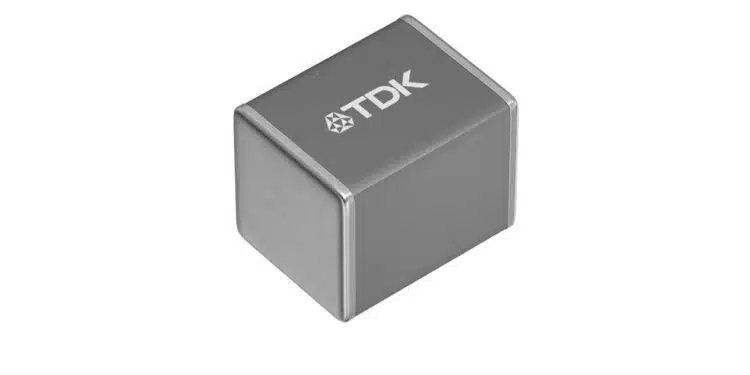TDK Corporation has expanded its CGA series for automotive and C series for commercial multilayer ceramic capacitors (MLCCs) to 10 nF at 1,250 V in 3225 size (3.2 x 2.5 x 2.5 mm – L x W x H), with C0G characteristics (Class I dielectric).
This is the industry’s highest capacitance for a 1,250-V rated product in 3225 size and this temperature characteristic.
Mass production of the product series began December 2024.
Circuits using silicon carbide (SiC) MOSFETs, which can withstand high temperatures and high voltages, are being adopted, and more and more circuits are becoming higher voltage and higher current to reduce the charging time of electric vehicles.
With this, the demand for high-voltage resistance for resonant and snubber capacitors grows.
C0G characteristic products change their capacitance only slightly over temperature and voltage, making them ideal for such applications. These MLCCs are high voltage resistant because their product and process design were optimized.
This makes them compatible with high-voltage circuits and makes it possible to reduce the number of MLCCs mounted in series, contributing to space-saving designs. Furthermore, compared to TDK’s previous products, it can reduce the heat generated and thus contributes to prevent excessive heat in the applications. TDK will further expand its lineup to meet the needs of customers.
Features
- C0G characteristics with very small changes in capacitance over temperature and voltage
- Enabling space-saving designs and reducing the number of components because the products can withstand high voltage up to 1,250 V in 3225 size.
- High reliability qualified based on AEC-Q200
Applications
- Resonant circuit capacitors
- Snubber capacitors































